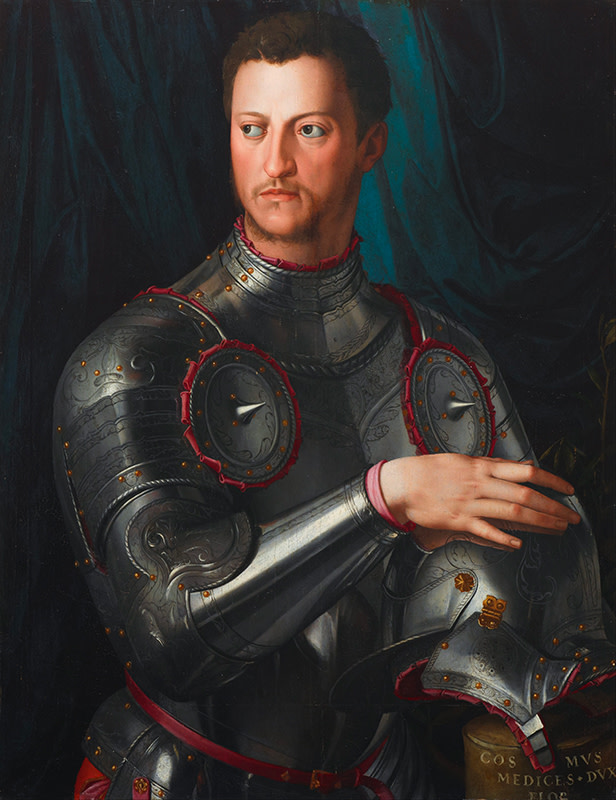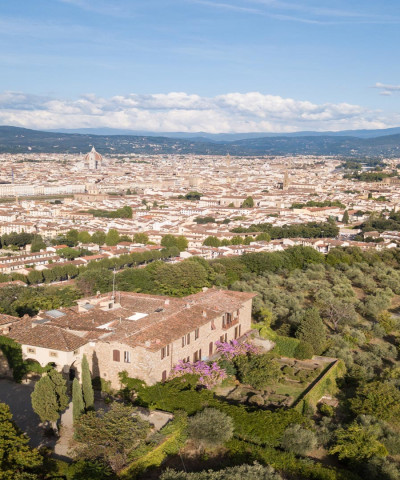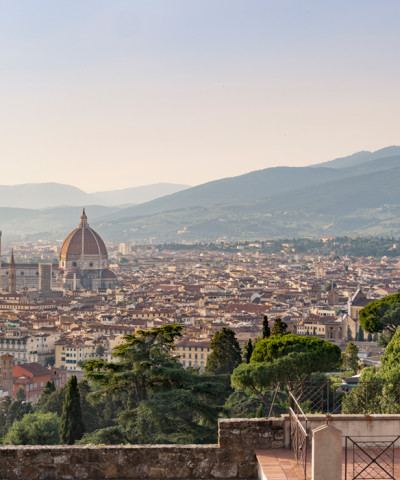Cosimo I dei Medici, works and curiosities of the first Grand Duke of Tuscany
Everything you don't know about one of the protagonists of Florentine history
To mark the 450th anniversary of the death of Cosimo I dei Medici and Giorgio Vasari (1574-2024), the Municipality of Florence and MUS.E are promoting a programme of initiatives and events aimed at highlighting and raising awareness of these two important protagonists of Florentine history and their indissoluble union. The appointments are held in the Palazzo Vecchio every Saturday (at 11:30 a.m. until May 25) in the Hall of the Elements. Each week it is possible to delve into the history of one of the protagonists of Italian art: Beato Angelico (April 20), Leon Battista Alberti (April 27), Sandro Botticelli (May 4), Raphael Sanzio (May 11), Friar Filippo Lippi (May 18) and Titian Vecellio (May 25). In addition, every week until May 26, one can also participate in Guided by Giorgio Vasari, visits that take the public on a real dive into the past. The proposals cost €2.50 (residents Metropolitan City of Florence) or €5 (nonresidents Metropolitan City of Florence) in addition to the museum entrance fee. For information and reservations: info@musefirenze.it or 055 2768224
 Cosimo I de' Medici by Agnolo Bronzino
Cosimo I de' Medici by Agnolo BronzinoApril 21st marks the 450th anniversary of the death of Cosimo I de’ Medici (Florence 1519-1574). A central figure in Florentine history and culture and the first Grand Duke of Tuscany, how can we not celebrate this strong and proud leader who was not fazed by his sudden rise to power at only 17 years old, following the assassination of the Duke of Florence, Alessandro de’ Medici. On the contrary: Cosimo had inherited the fighting spirit of his father and paternal grandmother, Caterina Sforza, and as soon as he was in power, he dismissed the councillors who thought they could influence him, and thus took absolute authority. Thanks to his marriage to Eleanor of Toledo, a woman as intelligent and enlightened as her husband, the Medici’s power was strengthened throughout the region, earning them a leading role in the shaping of modern Florence and Tuscany in just a few years. Patron, legislator and statesman, capable of bringing what had until then been a small regional power up to the level of the great royal courts and nations of the 16th century.
In Tuscany, the Pater Patriae built roads, drainage systems, and seaports. He equipped many cities with fortifications and set up new garrisons, building fortresses in Siena, Arezzo and Pistoia. In Sansepolcro, he demolished all the hamlets outside the walls, preferring to strengthen the ancient city walls rather than enlarge them. He also reinforced the mediaeval defences in Pisa and Volterra and had a new city wall erected at Fivizzano to block the Apennine passes. He fortified the towns of San Piero a Sieve, Empoli, Cortona and Montecarlo a Lucca and ordered the fortress-town of Portoferraio on the island of Elba to be built from scratch.
In Florence, Cosimo I sponsored numerous works, being perhaps one of the first to understand and exploit the political power of art. His various works include the construction of the Magistrature building, which later became the Uffizi Gallery under Grand Duke Francesco I; the extension of Palazzo Pitti, which became the official residence of the grand dukes; and the completion of the Boboli Gardens. He connected his new residence with Palazzo Vecchio through the Vasari Corridor.
His court was animated by artists such as Giorgio Vasari, Agnolo Bronzino, Bartolomeo Ammannati, Benvenuto Cellini, Michelangelo Buonarroti, Francesco da Sangallo, Giambologna and Galileo Galilei. An archaeology enthusiast, he undertook research of Etruscan artefacts in Chiusi, Arezzo and other cities, bringing to light numerous objects and statues. Below are some of his most important achievements in the city.
(Here our in-depth look at the Uffizi Gallery, here our tour of the Vasari Corridor and here a focus on the Boboli Gardens).
Commissioned by Cosimo I, with construction starting in 1560, the Magistrature building, or ‘Uffizi’, were the administrative and judicial offices of Florence. Construction involved demolition and redevelopment of the Baldracca district, where an infamous tavern of the same name once stood. The demolition spared the ancient Romanesque church of San Pier Scheraggio, formerly the seat of the assemblies of the Free Commune before the construction of the Palazzo della Signoria.
Vasari brilliantly solved the problems imposed by the limited space by adopting solutions with a strong visual impact. Located on the ground floor of the complex were the 13 Magistrate’s Courts that governed Florentine production and trade. On the first floor above the gallery were administrative offices and the grand ducal workshops, laboratories dedicated to the manufacture of particularly valuable goods. The building was crowned by a covered gallery, originally open to the elements. Cosimo I requested the construction of a causeway, still in use today, stretching between the new building and Palazzo Vecchio. In March 1565, on the occasion of the wedding of Francis I and Joanna of Austria, a passage connecting the Uffizi to the residence in Palazzo Pitti, the present-day Vasari Corridor, was also built. This aerial corridor, reserved for exclusive use by the court for three centuries, was opened to the public in 1865.
After Vasari’s death (1574), work continued under the direction of Alfonso Parigi and Bernardo Buontalenti, who completed the building in 1580, also connecting it to the Loggia dei Lanzi. Francesco I, Grand Duke from 1574 to 1587, was responsible for the first museum layout of the gallery on the top floor of the complex. The eastern arm housed a series of antique statues and busts and along the corridor was the Tribuna, an octagonal room designed by Buontalenti to house the treasures of the Medici collections.
In 1549, Bonaccorso Pitti, a descendant of the merchant lineage of the same name, sold his residence to Eleanor of Toledo, wife of Cosimo I de’ Medici. It was thus that Palazzo Pitti became a representation worthy of the grandeur of the nascent Grand Duchy, located in a more pleasant area than Palazzo Vecchio, as Eleanor wished. Bartolomeo Ammannati, the Grand Duke’s favourite architect, enlarged the main body of the palace’s façade and the rear section. At the same time, behind the palace the magnificent Italian Boboli garden was created. Thus both garden and palace were designed and developed together over the next three centuries, with a close dialogue between art and nature that led Boboli to become the model for palace gardens all over Europe.
Also begun in 1549, based on a design by Niccolò Pericoli, known as Tribolo, for Duchess Eleanor di Toledo, the Boboli Gardens represent one of the greatest examples of Italian landscaping. It took shape on the slope of the hill behind the palace, which was geometrically divided by arranging trees and flower beds in a regular and symmetrical manner. It was decided to start planting hedges, trees, rare and wild plants and building fountains immediately, in a great fervour of ideas that would make Boboli one of the most significant gardens, worthy of a grand ducal residence. Unfortunately, Tribolo died shortly after work began and the direction of the work passed to Bartolomeo Ammannati and then later to Bernardo Buontalenti. One of the first major undertakings was the construction of the Madama Grotto, built from 1553 to 1555, with the intention of recreating naturalistic environments, populated by mysterious stone beings and animals. Between 1583 and 1593, under the direction of Bernardo Buontalenti, the Grotta Grande took shape. Known also as the Buontalenti Grotto, it was built on the site of a plant nursery designed by Vasari. The grotto was created with striking visual effects, using calcareous formations in the form of stalactites, shells and terracotta reliefs, with water flowing down the walls to give them vibrancy and colour. In 1631, Giulio Parigi transformed the Amphitheatre from a landscaped architecture into masonry. Under Grand Dukes Cosimo II and Ferdinando II de’ Medici, the Garden was enlarged by Giulio and Alfonso Parigi, extending it southwards, parallel to the Palace, within the circle of the walls.













